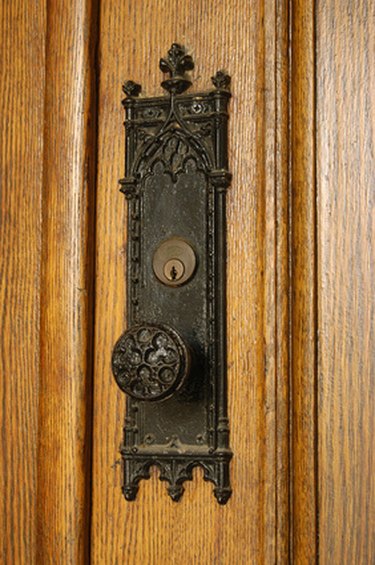Things You'll Need
Soft cloth
Hot vinegar
Salt
Acrylic urethane
Paintbrush

When brass turns green, it means that oxygen in the atmosphere is decaying the metal through oxidation, leaving a thin film called patina. High levels of humidity speed the process, and jewelry, fixtures or even doorknobs made of brass can turn greenish, staining skin that comes into contact with the surface. Since doorknobs are used quite a bit during a normal day, it's necessary to clean, seal and protect them from the elements to prevent a green patina from forming.
Step 1
Clean the brass doorknob thoroughly. Pour a few tablespoons of salt into a small dish. Heat up 1 cup of vinegar on the stove until it's hot, but not too hot to touch. Dampen a soft, clean cloth with the vinegar, then dip the cloth into the salt.
Video of the Day
Step 2
Polish the doorknob with the salt-and-vinegar mixture. Vinegar is acidic and will lift the patina while the salt scrubs it away with its rough granules. Polish until no more green comes off on the cloth and the doorknob has a high shine. Rinse it with clean water and wipe dry.
Step 3
Paint the doorknob with clear acrylic urethane, using a small paintbrush. The urethane will seal and protect the brass surface from the atmosphere, and the acrylic will resist moisture and acids from fingertips and air pollution, lasting for several years.
Step 4
Let the acrylic urethane dry for several hours. Test a small corner of the brass doorknob with your finger. If it leaves a fingerprint, allow more drying time before using the doorknob as usual.
Tip
Antique brass doorknobs may have corrosion as well. This can be very difficult to remove at home. Consider sending the piece out to a professional for dipping and polishing with metal polishing equipment.
Warning
Avoid using lacquers to seal brass finishes. Acrylic urethane is far superior in terms of durability and shine.
Video of the Day